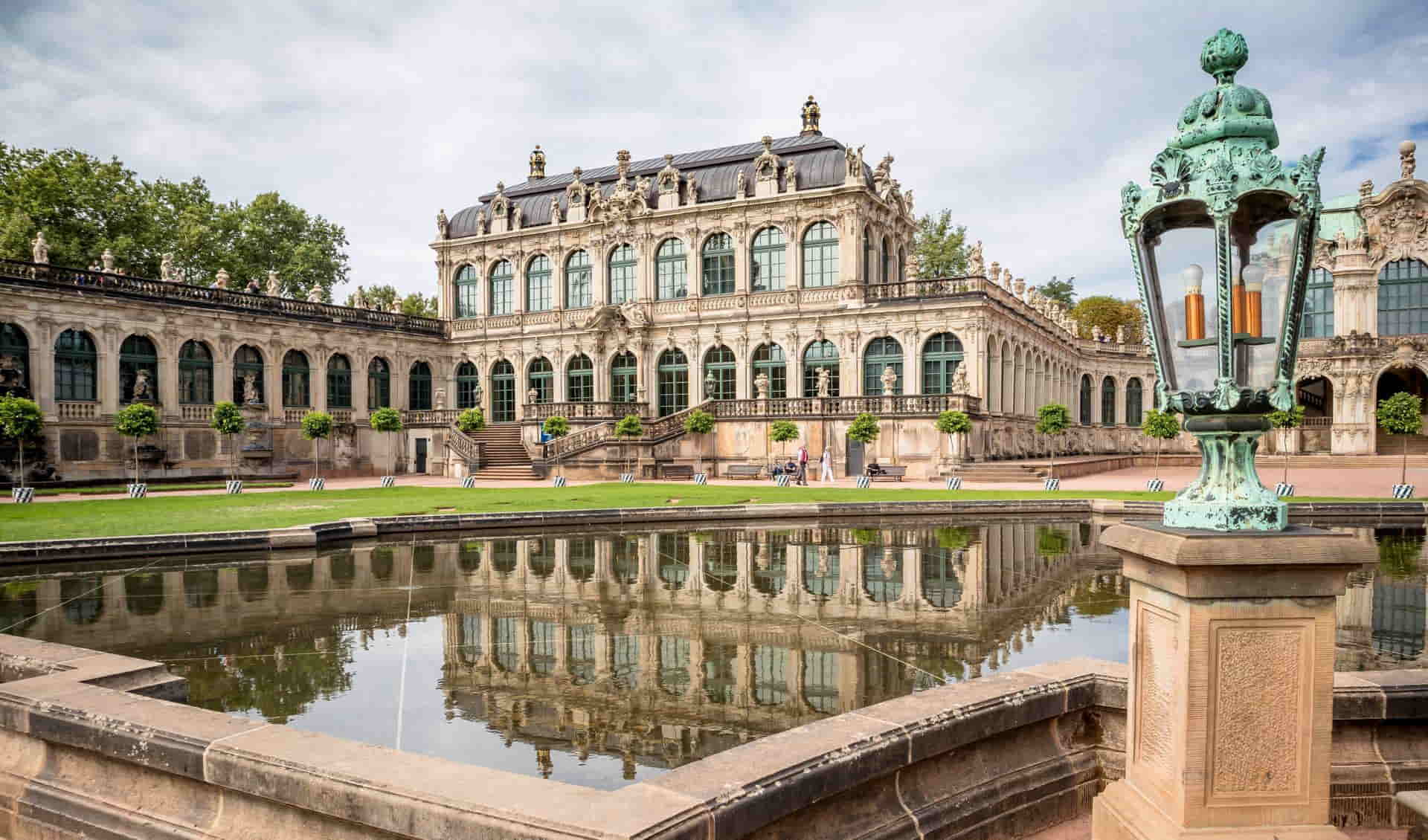Stepping into the Zwinger in Dresden is like opening a storybook into Germany's grand Baroque period. This palatial complex, complete with ornate pavilions and sprawling gardens, was conceived as a setting for regal festivities and remains a cultural hub in the heart of Dresden. It is not merely an architectural marvel; the Zwinger is a celebration of history, art, and the joy of exploration that resonates with families from across the globe.
As you walk through the intricate archways and stand in the open courtyards, you can almost hear the echoes of past merriments and the awe of spectators from centuries ago. With its majestic galleries and fountain at its center, the Zwinger invites curious minds of all ages to admire and learn. The ensemble of museums, such as the Gemäldegalerie Alte Meister (Old Masters Picture Gallery) and the Mathematisch-Physikalischer Salon (Mathematics and Physics Salon), houses a treasure trove of artworks and scientific instruments that can spark inspiration in every young traveler.
Contents
 Photo: pixabay.com
Photo: pixabay.com
The experience of visiting the Zwinger is seamlessly educational and entertaining. Here, history is not confined to the displays; it's part of the air surrounding you, making it a must-visit destination for families seeking a journey through time and culture.
What is Zwinger Known for?
The Zwinger in Dresden is celebrated for its exceptional Baroque architecture, which has captivated visitors for centuries. At its core, it is a feast for the senses with ornate pavilions and lush gardens that serve as a backdrop for family photos and quiet strolls.
- Architecture: Designed by Matthäus Daniel Pöppelmann, its intricate details and grand façades are a testament to the German Baroque style.
- Art Collections: It shelters the Dresden State Art Collections, offering families a cultural treasure trove.
- Historical Significance: Commissioned by Augustus II, it stands as a symbol of Dresden's past splendors and royal festivities.
The Zwinger has always been more than just an architectural wonder; it is a place where history and culture converge. It houses several museums, including the famous Old Masters Picture Gallery, which will fascinate young art enthusiasts and seasoned fans alike. Teachers, parents, and children can all find something to bond over, from mathematical instruments to porcelain collections. It's not just a site to visit but an experience — imbued with knowledge, beauty, and the spirit of exploration that resonates with families stepping through its gates.
Dresden Castle is only 300 meters from the Zwinger. Take the whole family there too.
Here is Why Your Kids Will Find it Interesting
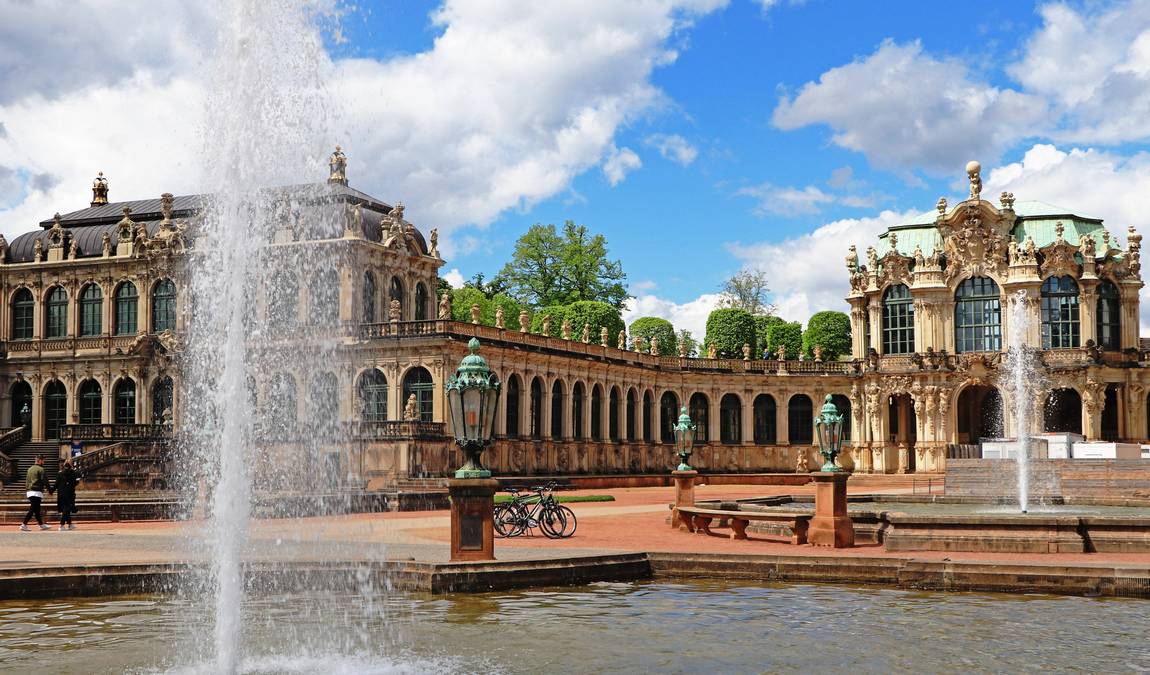 Photo: pixabay.com
Photo: pixabay.com
This place is a playground of history and beauty that beckons families for an enchanting day out. It's not just a relic from the past; its vibrant present ensures that children of various ages, especially those between 6 and 12, are captivated by the fusion of culture and fun it offers.
Enticing Architecture and Fountains, Kids are naturally drawn to the sprawling gardens and playful fountains that adorn the Zwinger. The grandeur of the Baroque architecture, which kids might recognize from fairy tales, comes alive here. They can marvel at the impressive porcelain collection in the Zwinger, with stunning examples that will capture their imagination.
Interactive Exhibits Zwinger is worth visiting with kids because of its interactive and engaging museum exhibits. These exhibits are not just stationary displays; they invite young minds to explore and participate. The hands-on elements present complex ideas in a digestible format for children, igniting a curiosity about history and how people lived in bygone eras.
Educational Experience Lastly, a visit here is camouflaged learning. As kids stroll through this historical landmark, they receive lessons in art, culture, and history without the confines of a classroom setting. The fusion of entertainment with education makes the Zwinger an invaluable experience for younger visitors.
- Architectural wonderland with gardens and fountains
- Interactive and engaging museum exhibits
- A blend of entertainment and educational value
These elements come together to create a visit that is both memorable and enlightening for children and adults alike.
Historical Overview
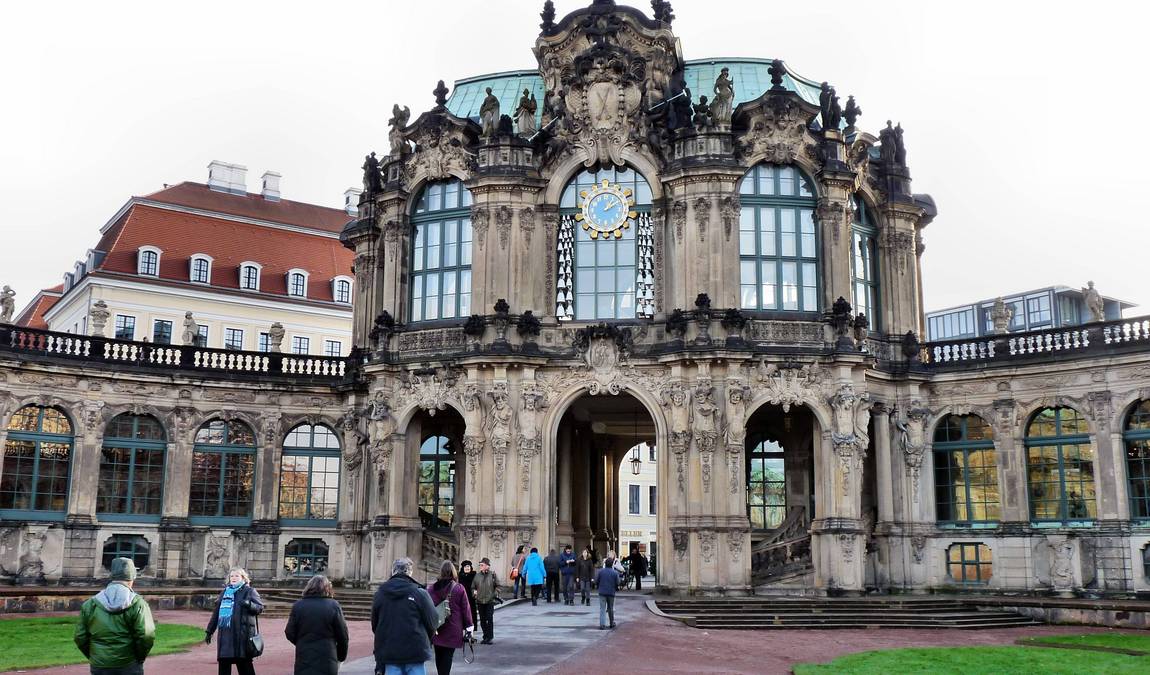 Photo: pixabay.com
Photo: pixabay.com
In the heart of Dresden, Germany, the Zwinger was initially conceived as a forecourt for a castle that Augustus II the Strong wished to build. Construction began in 1709, during the reign of Augustus II, who envisioned an extravagant arena for court festivities. Despite never realizing the palace, the complex achieved its foundational form by 1719.
As an outstanding example of Baroque architecture, the Zwinger was designed by architect Matthäus Daniel Pöppelmann. It flourished as a center of culture and a setting for the Saxon court's opulent spectacles. The halls and pavilions are elegantly decorated, aligning with the Baroque period's intricate aesthetics and embodying the era's grandeur.
King of Poland and Elector of Saxony, Augustus II the Strong's influence on the Zwinger is undeniable. His aspirations for magnificence and power transformed Dresden into a cultural and architectural hotspot, with the Zwinger as a focal point. It is a physical manifestation of Augustus's indelible mark on the city and arguably one of his most enduring legacies in Germany.
Architecture and Design
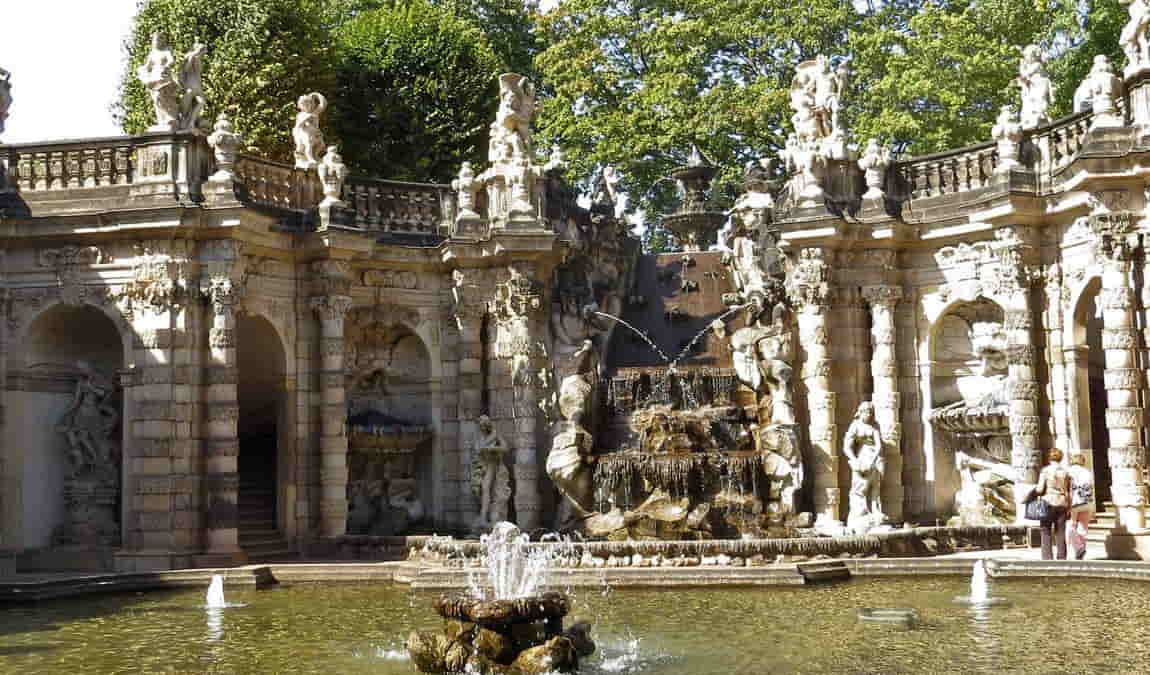 Photo: pixabay.com
Photo: pixabay.com
The Zwinger in Dresden is a stunning example of Baroque opulence, offering visitors a visual feast of architectural excellence and beautifully manicured gardens. It is a celebration of the grandeur and extravagance of the time, crafted by two of the era's foremost artists, architect Matthäus Daniel Pöppelmann and sculptor Balthasar Permoser.
Pöppelmann's Masterpiece
Matthäus Daniel Pöppelmann, a distinguished architect of the Baroque period, was the creative genius behind the Zwinger's intricate designs. His visionary approach is evident in the layout, which was initially intended as part of a larger fortification complex. Over time, however, the focus shifted towards creating a cultural and entertainment hub, giving rise to the pavilions and galleries that now house prestigious art collections.
Baroque Architecture Details
The architecture is a testament to the exquisite style of the Baroque era, embellished with intricate details that captivate the eye. Balthasar Permoser's sculptural works add a dramatic flair to the arresting facades. The ornate wall pavilions, symmetrical galleries, and lavish use of sandstone speak volumes of Augustus the Strong's dedication to aesthetic perfection during his reign.
Gardens and Pavilions
The Zwinger's gardens are a tranquil retreat from the city's bustle. A series of pavilions and galleries frame them, each offering a unique architectural experience. The lush lawns and carefully curated flower beds provide an idyllic backdrop for families to wander through historic splendor. At the same time, the fountains and sculptures serve as interactive elements for the enjoyment of kids and adults alike.
Collections and Exhibitions
The Zwinger Palace offers a rich feast for the eyes with its multifaceted collections. Families wandering through its corridors can explore European masterpieces, marvel at exquisite porcelain, and discover historical scientific instruments. Each collection is housed within the grand Baroque architecture of the Zwinger, making the Experience educational and visually captivating for the young and the old.
Old Masters Picture Gallery
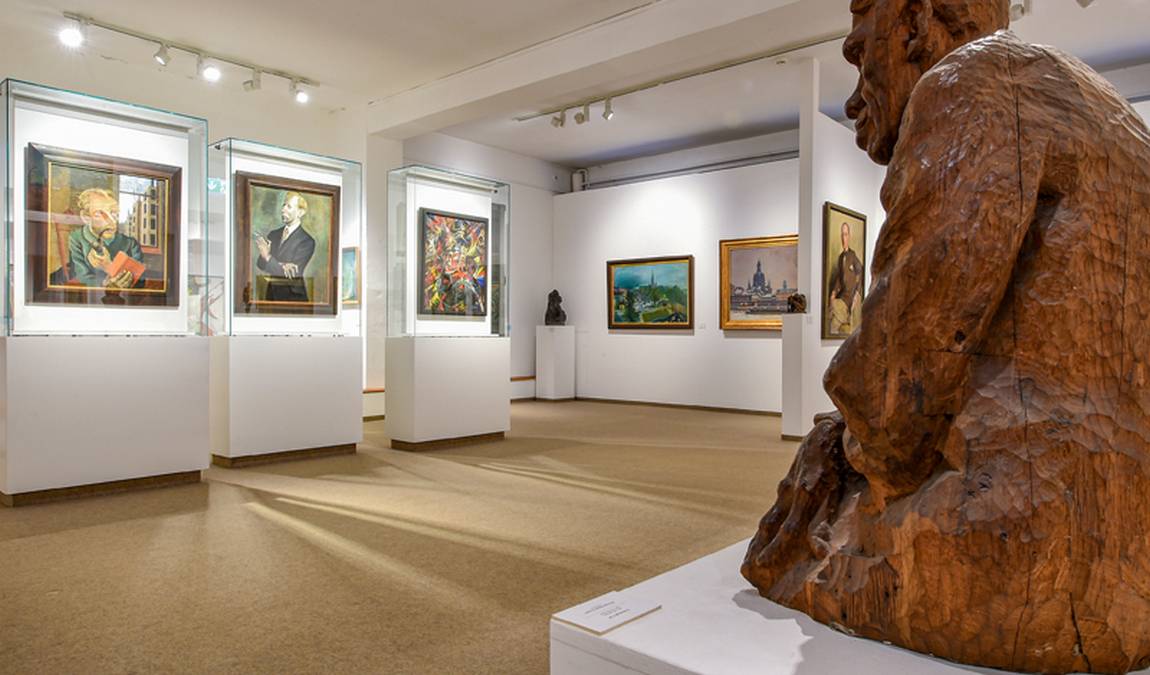 Photo: der-dresdner-zwinger.de
Photo: der-dresdner-zwinger.de
The Gemäldegalerie Alte Meister, known in English as the Old Masters Picture Gallery, presents an impressive array of European paintings dating back six centuries. Visitors will encounter artworks by renowned artists, including Raphael, Titian, and Rembrandt, that collectively trace the development of art history. Sculptures are interspersed within the gallery, stimulating visual dialogues with the paintings.
Porcelain Collection
Within the Zwinger's pavilions, the Porcelain Collection, or Dresden Porcelain Collection, holds one of the world's most extensive assortments of Meissen porcelain. The beautifully crafted pieces, ranging from tableware to intricate figurines, showcase the artistry and innovation of European porcelain making, with a particular emphasis on works by the Meissen factory.
Royal Cabinet of Mathematical and Physical Instruments
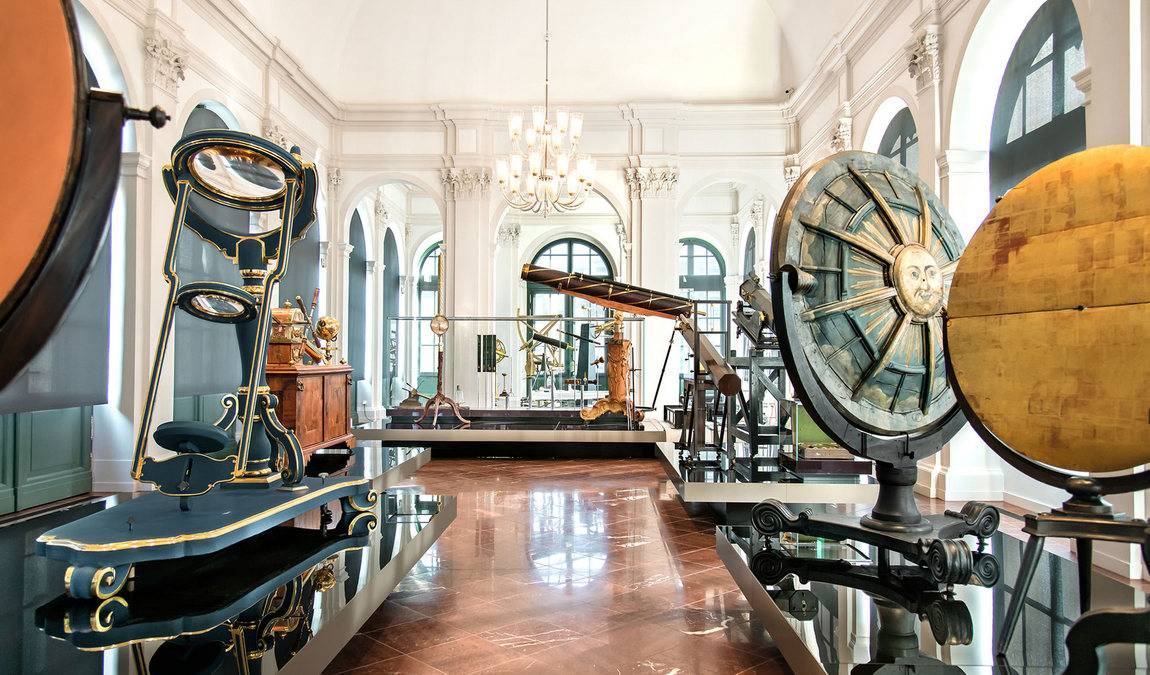 Photo: mathematisch-physikalischer-salon.skd.museum
Photo: mathematisch-physikalischer-salon.skd.museum
The Mathematisch-Physikalischer Salon (Royal Cabinet of Mathematical and Physical Instruments) houses an impressive collection of scientific devices for those intrigued by the intersection of science and art. From historical globes to intricate clockworks, each exhibit reveals insights into scientific advancements and the profound curiosity that fueled them, making it a wonderland for young, curious minds.
Zwinger Today
 Photo: facebook.com/dresdner.zwinger
Photo: facebook.com/dresdner.zwinger
The Dresdner Zwinger is a significant relic of the Baroque era and a lively cultural hub hosting many events yearly. Its crown jewel, the Kronentor, remains an iconic symbol of Dresden. Inside, the Semperbau houses the acclaimed Gemäldegalerie Alte Meister, showcasing masterpieces by renowned artists, while the adjacent Skulpturensammlung captivates with sculptures dating up to 1800. The complex, having witnessed reconstructions after events of the past, including the devastation of World War II, now thrives as a space for cultural events and educational programs – the Zwinger Xperience offers a multimedia journey into the Baroque celebrations of yesteryears.
Significant People and Artifacts
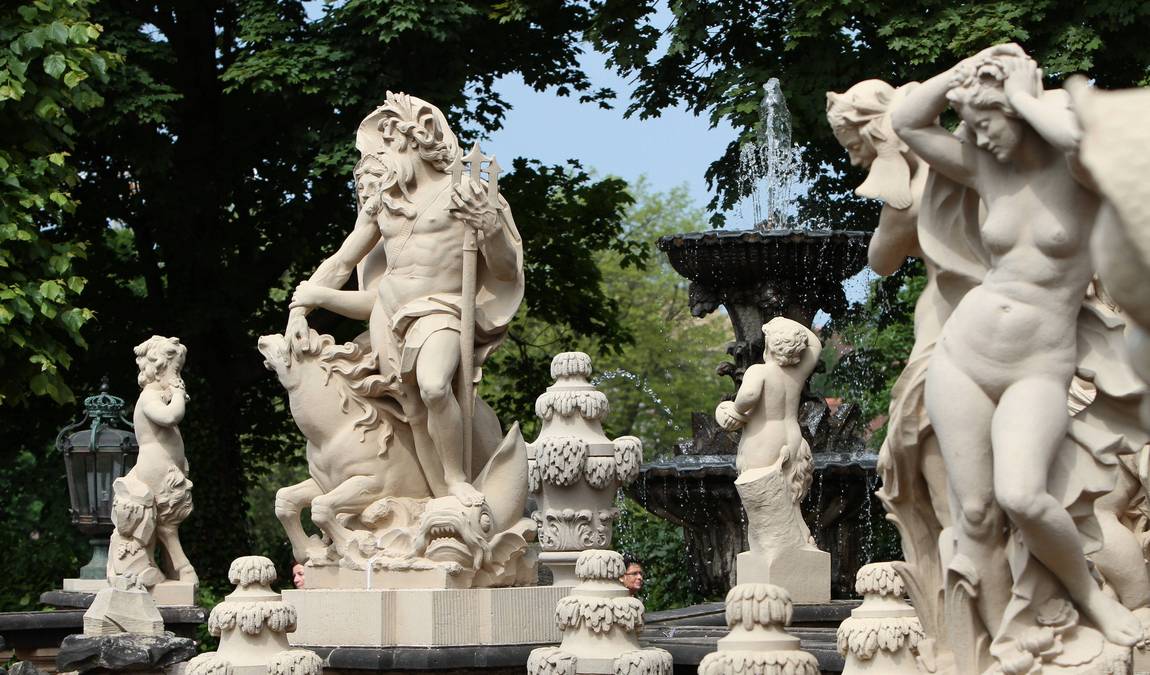 Photo: pixabay.com
Photo: pixabay.com
Zwinger Palace in Dresden abounds with history, holding in its heart the sweat and genius of famed architects and the timeless allure of world-renowned artifacts. It's a treasure trove for art lovers and families looking to inspire children with tales of creativity from centuries ago.
Architects and Sculptors
Matthäus Daniel Pöppelmann, the mastermind architect behind the Zwinger's intricate Baroque design, set the stage for what would become one of the most admired works of architecture in Germany. Under his vision, the Zwinger complex materialized from 1709 to 1719, a project commissioned by Augustus II. Assisting him, Balthasar Permoser, a renowned sculptor of his time, infused life into the stone with his exceptional skills, gracing the Zwinger with sculptures that still captivate visitors today.
Later, during the 19th century, Gottfried Semper lent his expertise to the Zwinger with the Semper Gallery, an exemplary addition that mirrored the existing magnificence. Semper, alongside other greats like Ernst Rietschel, contributed significantly to the artistic and structural growth of the Zwinger, enhancing its status as a beacon of Baroque splendor.
Noteworthy Exhibits
Housed within these historic walls is a parade of significant artifacts that draw enthusiasts from all corners of the globe. Among the cherished collections is the Old Masters Picture Gallery, where the strokes of Raphael's genius rest. His "Sistine Madonna," famed for its angelic cherubs, is a centerpiece that offers families the wondrous sight of Renaissance brushwork in full glory.
Not to be outdone, the Zwinger's Porcelain Collection and the Royal Cabinet of Mathematical and Physical Instruments are home to masterful pieces and scientific devices that unfold tales of Saxony's opulent past. However, not just what's on the walls garners admiration. The very palace itself boasts a narrative echoed in its grandiose statues of mythological figures, with Hercules Saxonicus and Bacchus standing as silent yet powerful reminders of the complex's historical grandeur.
Best Time to Visit
 Photo: pixabay.com
Photo: pixabay.com
The Dresden Zwinger is a feast for the eyes, brimming with Baroque artistry that enchants visitors of all ages. Choosing the ideal time for a family outing to this historic gem is critical to fostering a love for history and culture in the young ones.
Spring and Early Fall: Mild weather makes these seasons perfect for exploring the Zwinger's opulent architecture and gardens. The less crowded site allows families to stroll through the galleries without rushing.
Hours: Post-breakfast time (around 10 am) to early afternoon (by 2 pm) strikes the right balance between early crowd surges and late-day fatigue for children. The Zwinger generally opens at 6 am and invites visitors until 8 pm; checking the official opening hours before a visit is advisable since the season or events vary.
Weekdays: If possible, opt for a weekday visit; Monday through Friday is typically quieter and provides a more relaxed experience.
Weekends and holidays: Expect more visitors and a livelier atmosphere. If attending with children, it's wise to plan for early morning on these days to capitalize on the calm before the day peaks.
Events: Special exhibitions and family-friendly events often take place throughout the year. They're enjoyable and educational, so watch the event schedule.
For an engaging family excursion, balancing the tranquility of fewer crowds with the potential excitement of themed events will make the Zwinger experience memorable and enlightening.
How Long Does It Take to Attend?
Visiting the Dresden Zwinger is an enriching experience for families, as it combines historical architecture with delightful art collections. The time spent at this magnificent venue can vary depending on a family's pace and interest levels.
- Quick overview visit: Estimate: 1 to 2 hours
- Activities: A brief tour of the gardens and a quick walk through the galleries.
Piecing together a visit for families with kids, a reasonable expectation for a comprehensive tour could be between 2 and 4 hours. It allows for an immersive experience without overtaxing little ones' attention spans.
- Detailed visit: Timeframe: 3 to 4 hours
- Enjoyment: Explore the museums in more depth, attend a scheduled event, or stroll through the intricate gardens.
The outdoor areas of the Zwinger are free of charge, providing a budget-friendly option for families. Still, extra time must be allocated if one wishes to explore the interior museums.
- Museum exploration: Extra time: + 1 to 2 hours (per museum)
It is wise for visitors to check the official Zwinger opening hours, as they may change, especially if they plan to attend any special exhibitions or events. Families may also need to account for breaks, as kids often require rest and snacks to stay energized throughout the day.
Is Zwinger Worth Visiting?
 Photo: pixabay.com
Photo: pixabay.com
When planning a family getaway to Dresden, visiting this spot is indisputably worthwhile. This historical site is a feast for the eyes and a treasure trove of cultural and educational experiences that appeal to all ages.
Zwinger is worth visiting for its stunning Baroque architecture, beautifully manicured gardens perfect for a family picnic, and a diverse array of museums that house some of the finest collections in Europe.
- Architectural Splendor: The intricate Baroque design provides an awe-inspiring backdrop for family photos.
- Educational Galleries: The compound's museums, such as the Old Masters Picture Gallery, offer artworks that ignite children's imaginations and bring history to life.
- Open Spaces: The open courtyards and lush gardens nearby allow children to roam freely and safely.
There are many reasons to visit Zwinger, including its educational value with galleries like the Dresden Porcelain Collection, where families can marvel at historical porcelain artistry and demonstrate the craftsmanship of previous centuries to children. These accessible cultural offerings are complemented by the palace's open hours, with the gardens open early, ideal for a refreshing morning stroll with the family.
Given its cultural richness and family-friendly environment, Zwinger emerges as a highlight of Dresden's historical landscape and a must-visit destination for families looking to enrich their travel experience.
Zwinger is an authentic slice of history that offers families a compelling, visually captivating journey. Its grand Baroque façade contains endless education, exploration, and enjoyment possibilities. From its meticulously sculpted gardens to the interactive exhibits within its galleries, this place provides a full day of engaging activities for families with children.
It's a place where history is observed and experienced, making it an ideal destination for those seeking to instill an appreciation for art and heritage in the younger generation. As the heart of cultural Dresden, Zwinger welcomes families to plan their visit and discover the space where grandeur meets playfulness and learning becomes an adventure.


